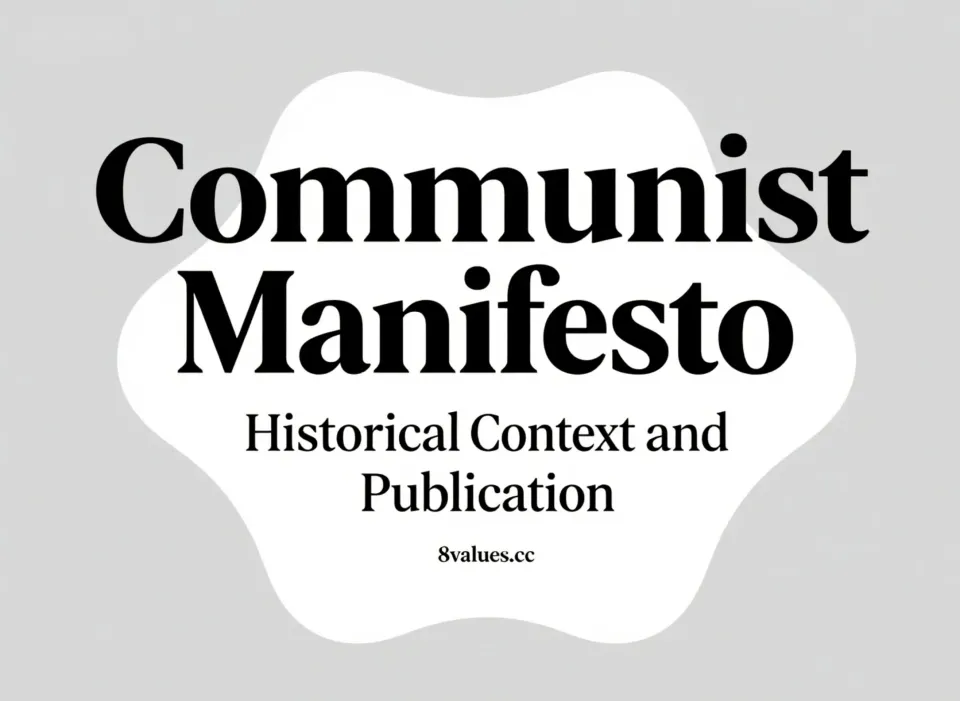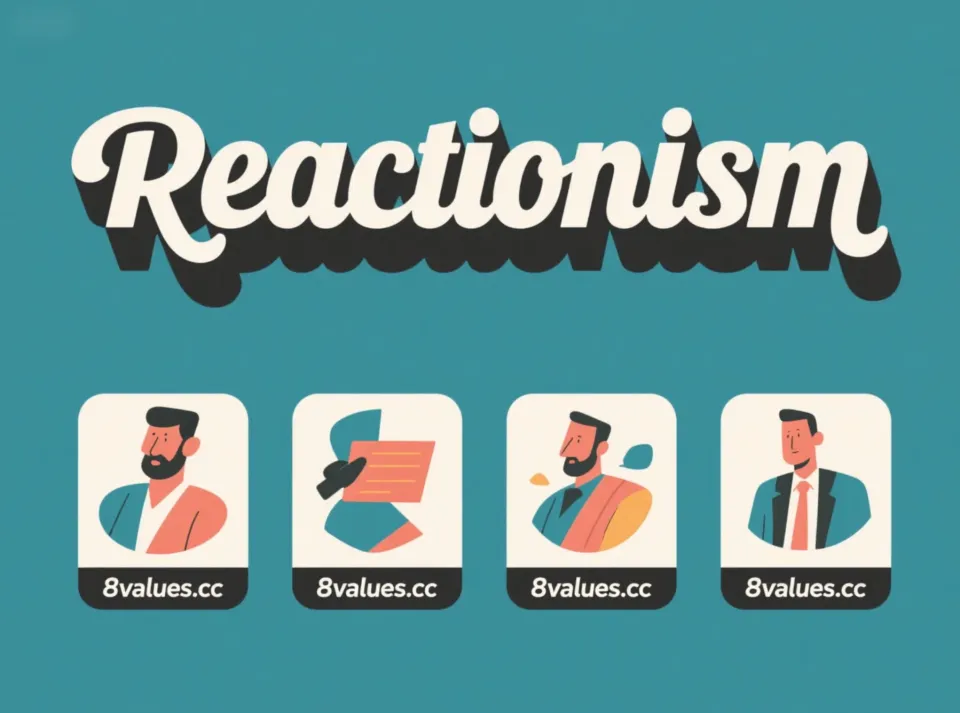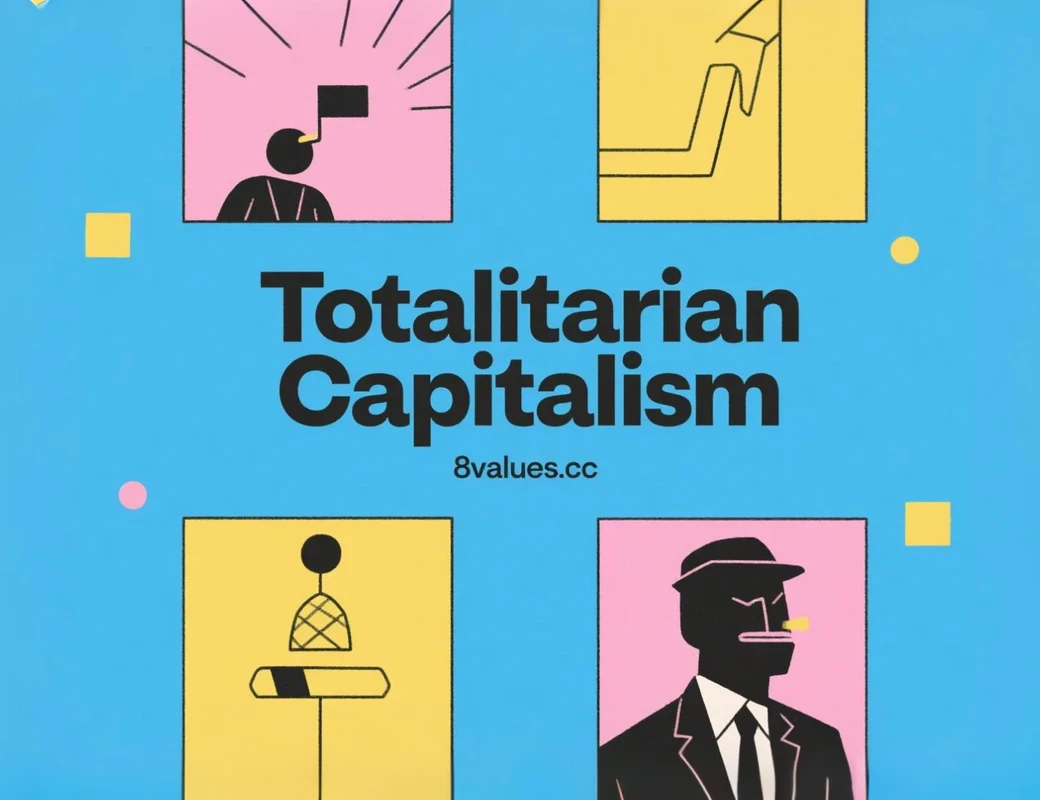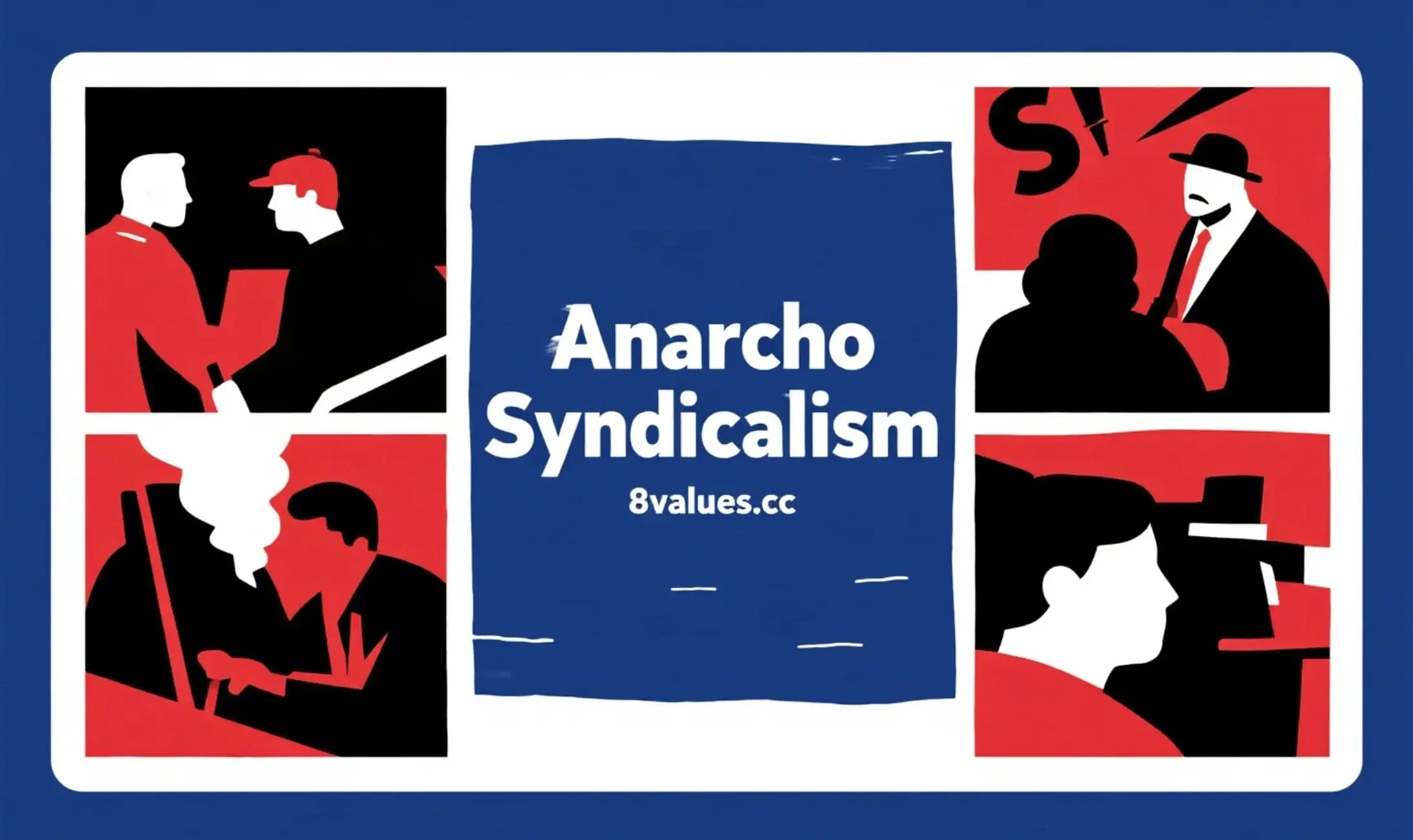The birth of The Communist Manifesto: Historical background, drafting and far-reaching influence
A thorough interpretation of the creative background of the Manifesto of the Communist Party, the most influential political document in history, the drafting process of Karl Marx and Friedrich Engels, and its historical status as a scientific socialist program. Readers can go to the 8Values Political Testing official website to learn more about ideological information.
The Manifesto of the Communist Party is a programmatic document jointly published by Karl Marx and Friedrich Engels in 1848 . The text is hailed as one of the most influential political documents in history, and its publication marks the maturity and publication of the scientific socialist theoretical system.
The Communist Manifesto is famous for its strong rhetorical power and poetic language , and the beginning is the famous saying "A spectre is haunting Europe - the spectre of communism" . Marx and Engels pointed out that all forces in old Europe, including the Pope, the Tsar, Metternich, Gizzo, French radicals and German police, have united to sacred encirclement and suppress this "ghost". Therefore, the purpose of writing the Communist Manifesto is to publicly clarify the views, purposes and tendencies of the Communists to the world , in order to clarify and dispel malicious misunderstandings and fears.
The historical background of the book The Communist Manifesto
The Communist Manifesto is not groundless, it was born in a historical period full of social unrest and change , that is, the mid-19th century.
European social unrest and the ills of capitalism
The mid-19th century was a period of accelerated industrialization in Europe. The establishment and development of the capitalist system brought about a huge technological leap and productivity improvement , and the bourgeoisie played a "very revolutionary role" in history. By constantly innovating production tools and production relations, the bourgeoisie completely tore apart the feudal, patriarchal and pastoral relationships.
However, this change has also brought about serious social ills:
- Simplification of class opposition: society is increasingly divided into two hostile camps - the capitalists with means of production and the proletariat who are forced to sell their labour-power.
- Naked Exploitation: Capitalism replaces the exploitative relationship that was previously covered by religious and political fantasies with "naked, shameless, direct, and cruel exploitation" . Marx and Engels criticized capitalism for simplifying the relationship between people to "naked self-interest" and "ruthless 'cash payment'" . The Communist Manifesto deeply reveals the inherent contradictions and exploitative nature of the capitalist system.
- Globalization and Crisis: The bourgeoisie opened up the world market, promoted the globalization of production and consumption, and involved all countries. But this system has a periodic economic crisis . Since the outbreak of the global financial crisis in 2008, the sales of the Communist Manifesto soared again, proving the relevance of its analyses of capitalism.
Farewell to "Utopian Socialism"
In the 1840s, the terms "Socialism" and "Communism " were not very popular in Germany, and they were initially associated with new ideas from France.
- Limitations of Utopia: Previous social reformers (such as Irving, Fourier, St. Simon, etc.) tend to appeal to the rationality of the ruling class to create an ideal society (Utopia), but they failed to recognize that the proletariat is an independent historical subject and revolutionary force for achieving social change.
- Establishment of scientific nature: The theory founded by Marx and Engels, namely Scientific Socialism , is based on historical materialism, and believes that class struggle is the basic driving force of all the history of human society so far. This "basic idea" believes that economic production and exchange methods and their inevitable social structure are the basis of political and spiritual history. Engels once compared the role of this idea in history is equivalent to the role played by Darwin's theory in biology .
For those who wish to further explore different political trends, we recommend that you conduct 8values political values inclination tests to understand your political tendencies in different dimensions. At the same time, the website also provides a detailed introduction to all 8values results ideologies .
The Communist League: Commissioning and drafting of the Program
The Communist Manifesto is a "party program" written by Marx and Engels at the commission of an international workers' organization .
The founding of the Communist League
In early 1847, a secret workers' organization called the "All of Justice" (originally composed of German workers, handicraftsmen and intellectuals, headquartered in London) invited Marx and Engels to join and hoped that they would assist in the organizational restructuring and drafting of the theoretical program .
- First Congress (June 1847): The League of Justices held a conference in London and was renamed the "Communist League" .
- The change of the program: The alliance gave up the original slogan of "Everyone is a brother!" (All people are brethren!) and replaced it with the more class struggled "Proletarians of all countries, unite!" (Proletarians of all countries, unite!).
- Second Congress (November 1847): The Alliance held another meeting in London and formally commissioned Marx and Engels to write a "detailed theoretical and practical party program" for him.
The process of finalizing the "Doctual Questions and Answers" to "Declaration"
Before Marx finally wrote, Engels had already done a lot of preparations:
- Engels' two drafts: Engels wrote the Draft of a Communist Confession of Faith in June 1847, and then drafted the Principles of Communism in October 1847 according to the requirements of the Paris branch of the Alliance. The Principles adopt the "catechism" form commonly used by secret organizations at that time, and clearly states that the goal of communism is to liberate the proletariat .
- The decision of style: In his letter to Marx, Engels proposed that in view of the need to describe certain historical content, the form of doctrine question and answer is no longer applicable, and it is recommended to adopt the form of "Communist Manifesto" .
- Marx's final writing: Marx accepted this suggestion and completed the manuscript alone in Brussels in January 1848 . Although Engels contributed the "general tone and spirit" of the basic draft and collective discussion, the "basic thoughts" and "core propositions" of the Communist Manifesto , that economic production determines social structure and class struggle, is the driving force of history, and belongs completely and exclusively to Marx .
The document is short and powerful, with a length of about 45 pages in the modern version and a total of about 14,000 words. Its theoretical and debate is far beyond the general party program.
The First Publication of the Communist Manifesto and Historical Destiny
The advent of 1848 and the silence of early days
The manuscript of the Manifesto of the Communist Party was sent to a printing factory in London in early February 1848 and was first published in German on 21 February 1848 . This time point is extremely critical , because it almost coincides with the outbreak of the European Revolution in 1848.
However, for the first time, the Communist Manifesto did not have an immediate, broad impact . With the failure of the Paris workers’ uprising in June 1848, the European workers’ movement entered a low tide, and the Communist Manifesto was once silent .
Hard dissemination and the status of historical documents
Despite the early ups and downs, the Communist Manifesto is extremely vital, reflecting the history of the modern working class movement :
- International Communication: As early as 1848, the text was attempted to translate into multiple European languages. The first English translation was published in 1850 by Miss Helen Macfarlane in George Julian Harney's The Red Republican .
- The absence of Russia and the United States: When the Communist Manifesto was written in 1847, the last part (the Communists’ position on different opposition parties) did not involve Russia and the United States . Marx and Engels later explained that at that time, Russia was the "last huge reserve force" of all reactionary forces in Europe, while the United States absorbed the surplus proletarian forces in Europe through immigration, both of which were "the pillars of the existing European system." But by the preface of the Russian version in 1882, they pointed out that the situation had changed drastically and that Russia had become the "vanguard of revolutionary actions" in Europe.
- Commune experience: The revolutionary experience of the Paris Commune in 1871 prompted Marx and Engels to clearly point out in their later prefaces (such as the German version of 1872) that some revolutionary measures proposed in the "Communist Manifesto" (such as the ten articles at the end of Chapter 2) need to be revised in practice. The main revision is that the working class cannot simply master the ready-made state machine and use it to achieve its own goals .
- Official characterization: In June 1872, Marx and Engels jointly declared in the German preface that the "Communist Manifesto" had become a "historical document" and they had no right to change the original text .
The lasting influence and contemporary value of the thought of the Communist Manifesto
The Communist Manifesto goes beyond its original role as a political pamphlet and remains the most widely read political literature in the world .
Continuing and guiding significance of the theory
The Communist Manifesto has made great theoretical contributions:
- The foundation of the historical view: It clarifies the materialist view of historical materialism, emphasizing that social history is driven by material living conditions and class struggle.
- Core Program: The Communists' theory can be summarized as the sentence "Abolition of private property" . But what they mean is the elimination of bourgeois private property - that is, the form of property that "exploits wage labor", rather than personal labor income in the general sense.
- Criticism and clarification: The third part of the Communist Manifesto focused on criticizing various forms of "false socialism" at that time, including reactionary socialism , conservative or bourgeois socialism and critical utopian socialism. The Communist Manifesto also refutes the bourgeois accusations that communism will "eliminate freedom", "eliminate family", and "eliminate the country and nation", and points out that the "freedom" of the bourgeoisie is nothing more than "free trade and free trade based on bourgeois production relations."
Conclusion: Thinking about ideology with history as a mirror
The Communist Manifesto, co-written by Karl Marx and Friedrich Engels, has its revolutionary declaration— “The demise of the bourgeoisie and the victory of the proletariat are equally inevitable” —and still inspires countless discussions on social equity and change around the world. This document reminds us that any social system, including modern capitalism, must withstand a rigorous examination of its exploitative nature and its impact on human welfare .
After a deep understanding of classic texts such as the Communist Manifesto, you may want to measure the degree to which your own worldview fits with these ideological systems. We sincerely invite you to visit the 8Values Political Ideological Testing official website for free 8values Political Values Prone Testing and explore your ideological stance. By reading a series of articles on the official blog , you can better combine theoretical knowledge with current political reality to examine the complex ideological spectrum from a more professional perspective.
The "Communist Manifesto" ends with its inspiring slogans and summarizes the goals and beliefs of the proletarian revolution: "What the proletariat lose is only chains, and what they gain will be the whole world. Proletarians in the world, unite!" . This historical document will continue to serve as an important cornerstone for understanding the dynamics of class struggle and human pursuit of social equality.






